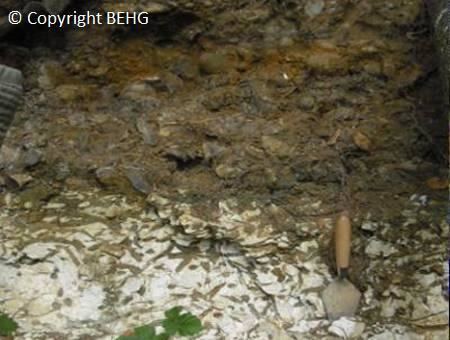 | ||
Overlies | ||
The Lambeth Group is a stratigraphic group, a set of geological rock strata in the London and Hampshire Basins of southern England. It comprises a complex of vertically and laterally varying gravels, sands, silts and clays deposited between 56-55 million years before present during the Ypresian age (lower Eocene). It is found throughout the London Basin with a thickness between 10m and 30m and the Hampshire Basin with a thickness between 50m and less than 25m. Surface outcrops are present only on the outskirts of these, however, that the Lambeth Group underlies some 25% of London at a depth of less than 30m means the formation is of great engineering interest for tunnelling and foundations.
Contents
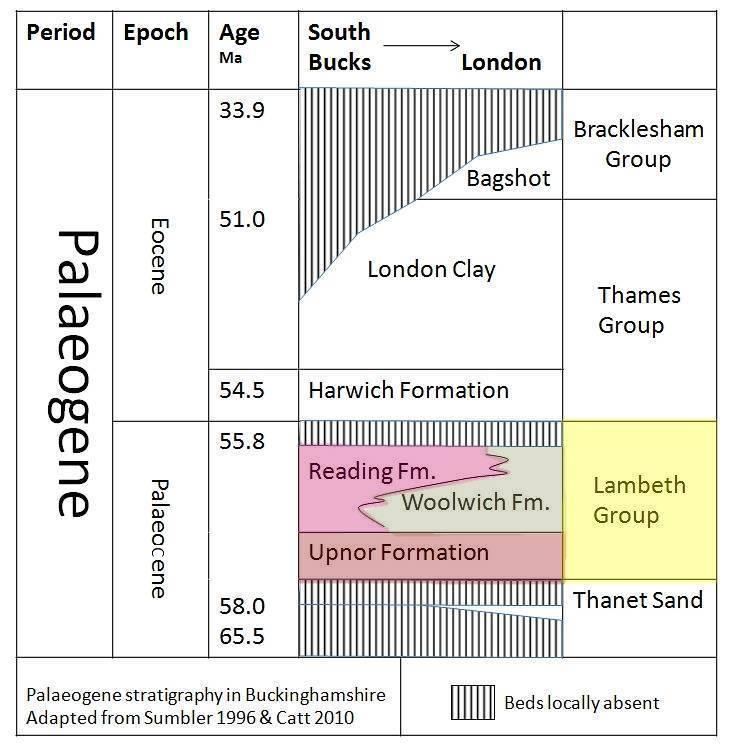
History
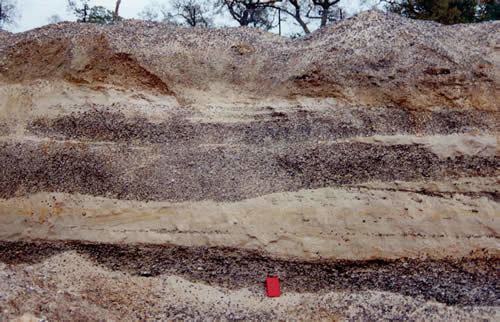
The formation was first known as the Plastic Clay by T. Webster in 1816 after the Argile plastique of Georges Cuvier and A. Brongniart. It was called the Mottled Clay by Joseph Prestwich in 1846, but in 1853 he proposed the name Woolwich-and-Reading Beds to emphasise the differing local aspects of the series. This name received widespread usage, however, has in turn been recently deprecated in 1994 in favour of the Lambeth Group by the British Geological Survey to conform with new standards and to allow scope for more detailed subdivisions.
Subdivision
The Lambeth Group consists of three formations:
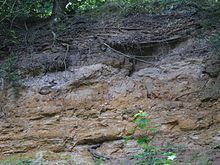
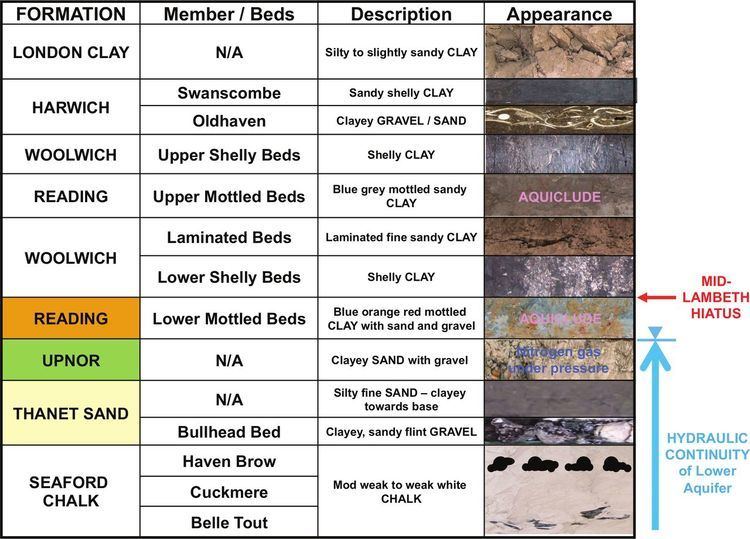
In Dorset the Reading Formation appears on the coast at Studland Bay and at other points inland. The Hertfordshire puddingstone is a well-known rock from near the base of the formation; it is a flint pebbly conglomerate in a siliceous matrix. The fossils, estuarine, freshwater and marine, include Corbicula cuneiformis, C. tellinella, Ostrea bellovacina, Viva parus lentus, Planorbis hemistoma, Melania (Melanatria) inquinata, Neritina globulus, and the remains of turtles, crocodiles, sharks, birds (Gastornis) and the mammal Coryphodon. Bricks, tiles and coarse pottery and occasionally firebricks have been made from the clay beds in this formation.
Stratigraphic relationship
Except in the Hampshire basin the Lambeth Group usually rests on the Thanet Formation, but they are found on the Chalk Group near Bromley, Charlton, Hungerford, Hertford, Reading, etc. It is usually covered by the Harwich Formation, the oldest formation of the Thames Group.
